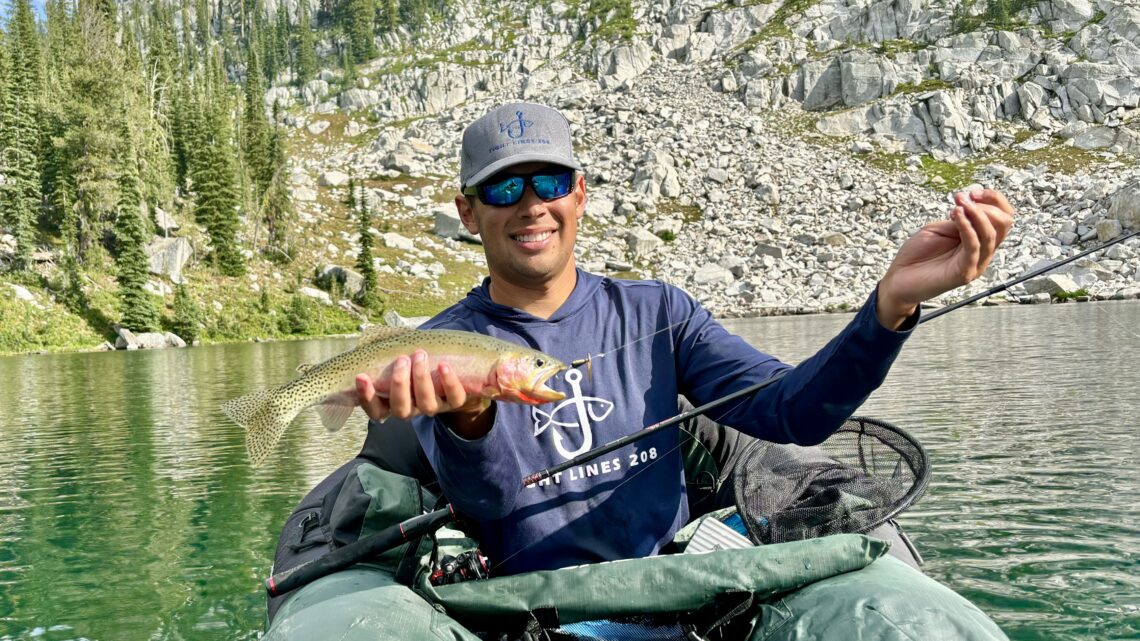
When I teach my fishing classes, one of the most common trends I see is anglers using overly heavy gear. Many folks spool their reels with 10, 12 or even 15-pound line. I understand the logic — heavier line will catch bigger fish — but there are tradeoffs. Fishing with lighter gear provides several advantages, and it’s also a fun challenge that can help you become a better angler.
My exploration of ultralight tackle started with ice fishing. Ice rods are small (usually 24-30 inches), and reels are designed for light line (4, 6 or 8 pounds). Small ice fishing lures take forever to sink if the line is too heavy, and lighter line is also less visible to the fish, who can be notoriously finicky under the ice. One of the first times I ice fished Henrys Lake, I caught a cutthroat trout over 6 pounds using 6-pound line on a 26-inch rod. It took me 10 nervous minutes to land that fish, but my eyes were opened — if light gear could land such a big fish through an 8-inch hole in the ice, what else could it do?
Today, almost all my ice rods are spooled with 4 or 6-pound line. My most memorable catch to date — the legendary “Walter,” a 30-inch Henrys Lake hybrid that weighed nearly 10 pounds — came on that same 26-inch rod with 6-pound line. If you take your time and use your drag system properly, there are almost no limitations to what you can catch using ultralight gear.
For ultralight fishing on open water, panfish are a good place to start. Catching bluegill, crappie and perch on light gear is ideal, as lures cast further and sink faster. It’s also much easier to detect light bites, and even small fish can present a challenging fight. My fishing buddy Jon is a diehard ultralight panfish angler, and you won’t often find him fishing with heavier gear, even when he’s chasing larger fish like bass and trout. Jon primarily fishes from shore, so extra casting distance is valuable. He also believes lighter line gets more bites, especially in pressured fisheries. His success rate has me convinced he’s right — and while he occasionally breaks off a big fish, the positives far outweigh those rare escapes.
In recent years, I have followed Jon’s lead by expanding my ultralight tactics to many scenarios, including backpacking trips to alpine lakes and the Boise River, where light gear has successfully handled trout up to 24 inches long! It’s a particular advantage in mountain lakes — it’s impressive how far a Panther Martin spinner or Rapala Countdown minnow will cast on 6-pound line. And longer casts mean more water coverage, increasing your chances that a hungry trout will chase down your lure.
Ultralight gear also travels well. I have a four-piece rod that has become my go-to for road trips. That’s the setup I took to Lake Havasu this spring, when I unexpectedly hooked an 11-pound, 6-ounce largemouth bass. Landing that record-sized fish was absolute chaos, and I would rather have had my normal bass tackle with 10-pound leader — especially when the fish got me tangled in a tree! But, in the end, the ultralight prevailed. It took a little skill, a lot of patience and a ton of luck, but that once-in-a-lifetime catch was extra memorable because of my undersized gear.
It was also a fun reminder that ultralight gear catches more than just panfish. Consider adding some light tackle to your arsenal — I promise you’ll enjoy the ride. Tight lines!